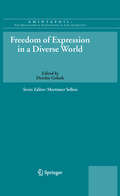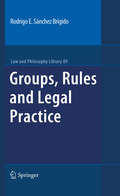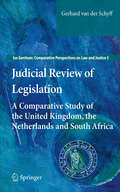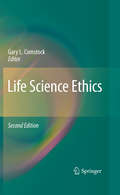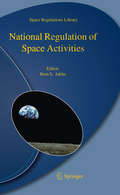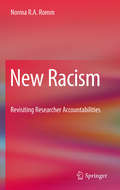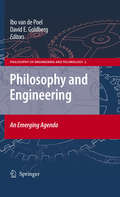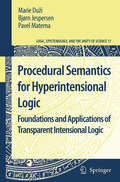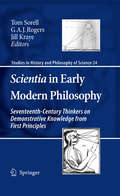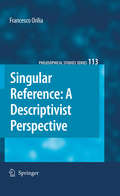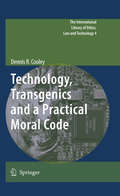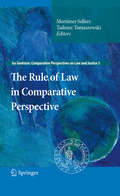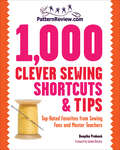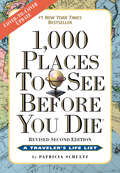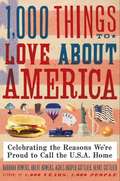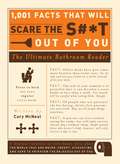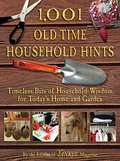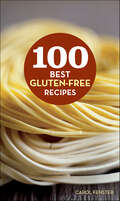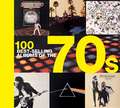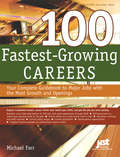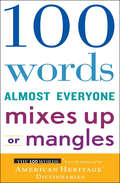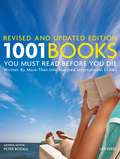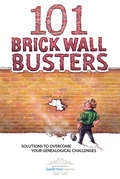- Table View
- List View
Freedom of Expression in a Diverse World
by Deirdre GolashThe debate over the foundations and boundaries of freedom of speech, once a matter of balancing the individual rights of unpopular speakers against broader social interests, took on a new shape in the 1980s when feminists began to advocate restrictions on pornography and critical race theorists to advocate restriction of certain kinds of hate speech. These challenges to traditional liberalism brought into sharp focus the issues of why we value free speech and how much weight it should be given against competing values. Difficult as it is to resolve these issues domestically, we now face new challenges arising from the increasingly rapid dissemination of information across international borders in an atmosphere of considerable political tension. The riots in response to the publication of Danish cartoons ridiculing Mohammed and the death threats against Salman Rushdie indicate how dramatically the stakes have been raised. At the same time, there is increased concern over discriminatory treatment of sexual minorities, Muslims, and immigrants. Against this background, the essays in this volume seek to illuminate why we value freedom of speech and expression and how this freedom can be weighed against other values, such as multicultural sensitivity, the rights of racial and sexual minorities, and the prevention of violence, both domestically and internationally.
Groups, Rules and Legal Practice
by Rodrigo Eduardo Sánchez BrigidoEver since Hart´s The Concept of Law, legal philosophers agree that the practice of law-applying officials is a fundamental aspect of law. Yet there is a huge disagreement on the nature of this practice. Is it a conventional practice? Is it like the practice that takes place, more generally, when there is a social rule in a group? Does it share the nature of collective intentional action? The book explores the main responses to these questions, and claims that they fail on two main counts: current theories do not explain officials´ beliefs that they are under a duty qua members of an institution, and they do not explain officials´ disagreement about the content of these institutional duties. Based on a particular theory of collective action, the author elaborates then an account of certain institutions, and claims that the practice is an institutional practice of sorts. This would explain officials´ beliefs in institutional duties, and officials´ disagreement about those duties. The book should be of interest to legal philosophers, but also to those concerned with group and social action theories and, more generally, with the nature of institutions.
Judicial Review of Legislation
by Gerhard van der SchyffConstitutionalism is the permanent quest to control state power, of which the judicial review of legislation is a prime example. Although the judicial review of legislation is increasingly common in modern societies, it is not a finished project. This device still raises questions as to whether judicial review is justified, and how it may be structured. Yet, judicial review's justification and its scope are seldom addressed in the same study, thereby making for an inconvenient divorce of these two related avenues of study. To narrow the divide, the object of this work is quite straightforward. Namely, is the idea of judicial review defensible, and what influences its design and scope? This book addresses these matters by comparing the judicial review of legislation in the United Kingdom (the Human Rights Act of 1998), the Netherlands (the Halsema Proposal of 2002) and the Constitution of South Africa of 1996. These systems present valuable material to study the issues raised by judicial review. The Netherlands is of particular interest as its Constitution still prohibits the constitutional review of acts of parliament, while allowing treaty review of such acts. The Halsema Proposal wants to even out this difference by allowing the courts also to apply constitutional norms to legislation and not only to international norms. The Human Rights Act and the South African Constitution also present interesting questions that will make their study worthwhile. One can think of the issue of dialogue between the legislature and the judiciary. This topic enjoys increased attention in the United Kingdom but is somewhat underexplored in South African thought on judicial review. These and similar issues are studied in each of the three systems, to not only gain a better understanding of the systems as such, but also of judicial review in general.
Life Science Ethics
by Gary L. ComstockDoes nature have intrinsic value? Should we be doing more to save wilderness and ocean ecosystems? What are our duties to future generations of humans? Do animals have rights? This revised edition of "Life Science Ethics" introduces these questions using narrative case studies on genetically modified foods, use of animals in research, nanotechnology, and global climate change, and then explores them in detail using essays written by nationally-recognized experts in the ethics field. Part I introduces ethics, the relationship of religion to ethics, how we assess ethical arguments, and a method ethicists use to reason about ethical theories. Part II demonstrates the relevance of ethical reasoning to the environment, land, farms, food, biotechnology, genetically modified foods, animals in agriculture and research, climate change, and nanotechnology. Part III presents case studies for the topics found in Part II.
National Regulation of Space Activities
by Ram S. JakhuThis book comprehensively addresses all aspects of national space laws and regulations governing the conduct of space activities in fifteen space-faring nations. This is the first book of its kind that contains a compilation of materials written from a neutral and objective perspective by the world's leading space law experts selectively drawn from the fifteen countries whose laws and regulations are covered by the book. In order to provide the reader with a full understanding and appreciation of the various relevant national laws and regulations that govern space activities, this book explores the policies and rationales underlying the law, constitutional basis for the adoption of national space laws, some facts about national space activities in the respective countries, and as well, discusses the relevant principles and rules of international space law in order to bring to light the international context of the national laws described. Since the U.S. presently has the most developed and extensive regime of national space laws and regulations, six chapters of this book are devoted to a thorough examination of those laws and regulations. The unique feature of this compilation is that, apart from the description of applicable national laws and regulations on space activities that it provides, it also sets out the various procedures to be followed particularly by domestic and foreign private entities in order to achieve compliance with the numerous and varied national legal requirements concerning space activities. This work will be a valuable resource not only to students, researchers and academics in the fields of space law and regulation, but also to space industry executives, specialist lawyers, foreign ministries as well as international organizations, such as the United Nations.
New Racism
by Norma RommThis book develops a debate around responsible social inquiry into new racism. A variety of ways of researching new forms of racism (for example, aversive, modern, cultural, purportedly color-blind, and new racism) are addressed. Experiments that have been undertaken to inquire into group identity and people's implicit bias in relation to those perceived as "other" are critically explored and their potential consequences reconsidered. The book also critically explores survey research, which, it is argued, can serve to reinforce the notion of the existence of ethnoracial groups with defined boundaries that inhere in social life. The book considers interviewing (including focus group interviewing) and case study research (including participant observation/ethnography) in terms of possibilities for moving beyond new forms of racism. Action research (defined by the understanding of an inextricable link between knowing and acting) is examined in-depth in terms of the hopes to "make a difference" at the moment of inquiry. Types of retroductive logic that are used to examine underlying structures that arguably unduly constrain people's life chances and render human relationships inhumane are also explored. The book draws together the different arguments; and it proposes ways in which the design of research into new racism can better approached as well as ways in which dialogue around processes of inquiry and the products thereof can be better fostered. Suggestions for nurturing humane social relationships that provide for transcultural meaning-making are threaded through the text.
Philosophy and Engineering: An Emerging Agenda
by Ibo van de Poel David E. GoldbergWhereas science, technology, and medicine have all called forth dedicated philosophical investigations, a fourth major contributor to the technoscientific world in which we all live - that is, engineering - has been accorded almost none of the philosophical attention it deserves. This volume thus offers a first characterisation of this important new field, by some of the primary philosophers and ethicists interested in engineering and leading engineers interested in philosophical reflections. The volume deals with such questions as: What is engineering? In what respect does engineering differ from science? What ethical problems does engineering raise? By what ethical principles are engineers guided? How do engineers themselves conceive of their profession? What do they see as the main philosophical challenges confronting them in the 21st century? The authors respond to these and other questions from philosophical and engineering view points and so illustrate how together they can meet the challenges and realize the opportunities present in the necessary encounters between philosophy and engineering - encounters that are ever more important in an increasingly engineered world and its problematic futures.
Procedural Semantics for Hyperintensional Logic
by Marie Duží Bjorn Jespersen Pavel MaternaThe book is about logical analysis of natural language. Since we humans communicate by means of natural language, we need a tool that helps us to understand in a precise manner how the logical and formal mechanisms of natural language work. Moreover, in the age of computers, we need to communicate both with and through computers as well. Transparent Intensional Logic is a tool that is helpful in making our communication and reasoning smooth and precise. It deals with all kinds of linguistic context in a fully compositional and anti-contextual way.
Scientia in Early Modern Philosophy
by Tom Sorell Jill Kraye G. A. RogersScientia is the term that early modern philosophers applied to a certain kind of demonstrative knowledge, the kind whose starting points were appropriate first principles. In pre-modern philosophy, too, scientia was the name for demonstrative knowledge from first principles. But pre-modern and early modern conceptions differ systematically from one another. This book offers a variety of glimpses of this difference by exploring the works of individual philosophers as well as philosophical movements and groupings of the period. Some of the figures are transitional, falling neatly on neither side of the allegiances usually marked by the scholastic/modern distinction. Among the philosophers whose views on scientia are surveyed are Hobbes, Descartes, Spinoza, Gassendi, Locke, and Jungius. The contributors are among the best-known and most influential historians of early modern philosophy.
Singular Reference: A Descriptivist Perspective
by Francesco OriliaSingular reference is the relation that a singular term has to a corresponding individual. For example, "Obama" singularly refer to the current US president. Descriptivism holds that all singular terms refer by means of a concept associated to the term. The current trend is against this. This book explains in detail (mainly for newcomers) why anti-descriptivism became dominant in spite of its weaknesses and (for experts) how these weaknesses can be overcome by appropriately reviving descriptivism.
Technology, Transgenics and a Practical Moral Code
by Dennis R. CooleyEthical debate often lags far behind the development of new technology. This book sets out a practical moral code with wide-ranging applicability, designed to include moral principles and a hierarchical value theory based partly on the work of Kant and Mill.
The Rule of Law in Comparative Perspective
by Mortimer Sellers Tadeusz TomaszewskiThis new volume on The Rule of Law in Comparative Perspective compares the different conceptions of the rule of law that have developed in different legal cultures. Lawyers and legal scholars from various legal systems describe the social purposes and practical applications of the rule of law, and how it might be improved in the varied circumstances of their own courts and politics. This book will be of interest to lawyers, judges, public officials, and to all those wishing to improve the fundamental structures of their own legal systems, by bringing equal justice to every person subject to the power of the state.
1,000 Clever Sewing Shortcuts & Tips: Top-Rated Favorites from Sewing Fans and Master Teachers
by Deepika PrakashGet invaluable advice from sewers like you with this handy reference.This practical reference guide features the best hands-on sewing tips culled from the popular sewing website PatternReview.com, a community of more than 200,000 members. You’ll also find special how-to features by PatternReview.com’s master teachers and pattern designers, including Kenneth D. King, Susan Khalje, Sarah Veblen, Shannon Gifford, and Anna Mazur. Best of all, these words of wisdom—more than 1,000 tips in all—will provide you with new solutions to the trickiest problems and show you how to save time, money, and materials.Praise for 1,000 Clever Sewing Shortcuts & Tips“A must-have book for every sewer’s library. Whether you’re a burgeoning beginner or a seasoned seamstress, this book will teach you more than a few new tricks. Honestly, I couldn’t put it down! It’s packed full of creative tips and great ideas, shared as always, sewer to sewer!” —Margo Martin, Executive Director, American Sewing Guild, Inc.“The only thing better than a good tip is more good tips, no? It’s all very well to get an expert’s tips, but what’s really needed when tip gathering is a hive-mind’s best discoveries, and there’s no busier, buzzier sewing hive than Deepika’s PatternReview, so you KNOW they’re in here, those tips you haven’t head, haven’t yet tried, haven’t yet imagined. Welcome to the Hive!” —David Coffin, former editor of Threads magazine and author of Making Trousers for Men and Women
1,000 Places to See Before You Die: Revised Second Edition (Picture-a-day Wall Calendars Ser.)
by Patricia SchultzThe world’s bestselling travel book is back in a more informative, more experiential, more budget-friendly full-color edition. A #1 New York Times bestseller, 1,000 Places reinvented the idea of travel book as both wish list and practical guide. As Newsweek wrote, it “tells you what’s beautiful, what’s fun, and what’s just unforgettable— everywhere on earth.” And now the best is better. There are 600 full-color photographs. Over 200 entirely new entries, including visits to 28 countries like Lebanon, Croatia, Estonia, and Nicaragua, that were not in the original edition. There is an emphasis on experiences: an entry covers not just Positano or Ravello, but the full 30-mile stretch along the Amalfi Coast. Every entry from the original edition has been readdressed, rewritten, and made fuller, with more suggestions for places to stay, restaurants to visit, festivals to check out. And throughout, the book is more budget-conscious, starred restaurants and historic hotels such as the Ritz,but also moderately priced gems that don’t compromise on atmosphere or charm. The world is calling. Time to answer.
1,000 Things to Love About America
by Brent Bowers Henry Gottlieb Agnes Gottlieb Barbara BowersFrom jazz to the Gettysburg Address to baseball to the White Castle hamburger-here are the 1,000 greatest things about America! The Pilgrims called their new nation "a shining city upon a hill." Abraham Lincoln praised it as "the last, best hope of mankind." In times of boom or bust, this remarkable land we know as America has been a beacon of hope illuminating the world. Now the authors of 1,000 Years, 1,000 People: Ranking the Men and Women Who Shaped the Millennium have teamed up once again to pay unabashed tribute to the greatness of our country-in a fascinating, fun, and informative celebration of the concepts, inventions, institutions, icons, history, social trends, geographical wonders, and consumer products that have made the U.S.A. such an awesomely amazing place! The Constitution Mount Rushmore Backyard Decks Monopoly Internet Shopping Duct Tape Yogi Berra The Super Bowl Ultimate Frisbee The Fifth Amendment The PTA The Indy 500 Freedom of the Press Hollywood Sesame Street ChapStick Poker The Wizard of Oz Fast Food The Cleveland Orchestra The Barn Owl Glacier National Park Jack Daniel's Old No. 7 Patchwork Quilts Soap Operas Joy of Cooking West Point A Streetcar Named Desire The Florida Keys The Red Cross Wikipedia Deodorant The Hubble Space Telescope Grizzly Bears The Beach Boys The White House Recycling Meat Loaf . . . and many, many more Things to Love About America!
1,001 Facts that Will Scare the S#*t Out of You: The Ultimate Bathroom Reader
by Cary McNealFact: Chocolate contains the alkaloid theobromine, which in high doses can be toxic to humans, and in even small amounts can kill dogs, parrots, horses, and cats.This means that despite its name, the Kit-Kat candy bar is not a recommended snack for your kitty-cat. I wonder how many cats have died because of this confusion.Fact: The most germ-laden place on your toilet isn't the seat or even the bowl--it's the handle.The solution: Don't flush. Let the next guy worry about it.There are "just the facts"--and then there are just the facts that will frighten the bejeezus out of you. And thanks to this little gem of a bathroom book, you'll never look at the world the same way again, without, er, dry heaving a little bit.From the sneaky fish that can swim up our genitals to the E. coli bacteria lurking in the very water we drink, disturbing phenomena are everywhere we turn. Educational, entertaining, and undeniably horrifying, this book isn't guaranteed to help you, um, go to the bathroom, but it's certain to make your time there more...informed.
1,001 Old-Time Household Hints: Timeless Bits of Household Wisdom for Today's Home and Garden
by Yankee MagazineWonder what Grandma would have used to clean greasy kitchen walls? Cure a sore throat? Conquer insect pests in her vegetable garden? Wonder no longer! Whatever your grandma did to fix and maintain things around the house and garden, it probably worked. That's because the old ways are often the best ways when it comes to solutions for everyday problems, ideas for saving time, and handy advice for getting the job done. And that's where 1,001 Old-Time Household Hints comes in. Find the best hints, tips, and secrets for everything from cooking, cleaning, and home maintenance to pet care, gardening, and holiday celebrations. You'll also find ways to adapt and improve some old-time methods. Discover an amazing variety of useful and clever ideas, including how to: Clean copper pans, using buttermilk and salt Make real sourdough bread the way the pioneers did Fight wrinkles and create kissable lips Use natural ingredients to repair your hair Create your own unique perfume Organize common space in your home Use ivory soap for polishing silver and insect control Safely separate drinking glasses that have been stuck together And more! With 1,001 Old-Time Household Hints on your kitchen table or nightstand, you're always in the good company of an old-timer who's ready to dispense a helpful hint, encouraging word, or sage secret at the turn of a page. 310 color photographs
100 Best Gluten-Free Recipes (100 Best Recipes Ser.)
by Carol FensterEssential gluten-free recipes for everyday favorites like breads, pastas, and dessertsAn absolute must-have for anyone who lives gluten free, 100 Best Gluten-Free Recipes compiles the most basic and vital recipes from top "gfree" diet expert Carol Fenster's 1,000 Gluten-Free Recipes—now in a handy, affordable, beautiful package complete with color photos. With celiac disease and non-celiac gluten intolerance becoming more common, a gluten-free diet is essential for a growing number of people. This book gives them safe, gluten-free recipes for the everyday foods they miss most—breads, pasta, muffins, cookies, cakes, pies, and more.For parents and home cooks who have children or family members who must eat gluten-free meals, this book offers familiar favorites that are just as tasty as the real thing. With crowd-pleasers like Pepperoni Pizza, Spaghetti with Marinara Sauce, and Chicken Marsala with Mushrooms, this book will become the gluten-free cook's best friend in the kitchen, and a great gift. • Features completely updated recipes • Includes five brand-new recipes, including nutritious Banana Bread with Chia Seeds, Fresh Chive Flatbread with Dipping Oil, and Chiles Rellenos • Offers a detailed introductory section with straightforward information on shopping guidelines, explanations of food labels, tips on organizing and stocking your pantry, and handy advice on cooking with gluten-free ingredients • Written by gluten-free expert Carol Fenster, author of 1,000 Gluten-Free Recipes • Includes 30 beautiful, enticing photos of finished dishes • Features icons that highlight vegetarian, kids' favorite, and quick recipes that can be prepared in 30 minutes or lessFor anyone who keeps a gluten-free kitchen, 100 Best Gluten-Free Recipes offers tasty options that make gluten-free cooking easy for every day.
100 Best-selling Albums of the 70s
by Hamish ChampFrom the Bee Gees to Pink Floyd to Supertramp, you’ll love this stroll down memory lane!From singer-songwriters like Billy Joel and the Bee Gees to folk artists like John Denver and James Taylor to the rock legends Aerosmith and Led Zeppelin, you won’t find a more complete list of albums that defines the '70s music scene. Each listing features the full-color, original sleeve artwork, and is packed with information about the musician lineup, track listings, and number-one singles that resulted. A celebration of this funky era, this book will help you shake your groove thing!
100 Fastest-Growing Careers
by Michael FarrAn extensive volume that provides information about pay, outlook, education, and skills needed to obtain some of the most promising jobs in the world of work.
100 Words Almost Everyone Mixes Up or Mangles (100 Words)
by Editors of the American Heritage DictionariesEliminate mistakes and improve your vocabulary with this engaging guide to the world&’s most misused words. Do you know your delegate from your relegate, your cachet from your cache? At one time or another we&’ve all suffered the embarrassment of having our remarks corrected by a family member, colleague, or stranger. 100 Words Almost Everyone Mixes Up or Mangles presents fifty pairs of words that people have trouble getting right and keeping straight—words that tend to get corrected when we&’re least expecting it. These words include near-synonyms—words with subtle but important distinctions in meaning—like baleful vs. baneful, and effectual vs. efficacious. Other pairings bring together notorious sound-alikes, like faze (bother) vs. phase (stage), pour (put in fluid) vs. pore (read closely), and waive (forgo) vs. wave (say hello). The book also addresses some classic spelling blunders and &“nonwords,&” like beyond the pail, full reign, injust, and inobstrusive. Each word has a definition and a pronunciation, and most have etymologies explaining the word&’s origin. The mix-ups themselves are described in fun-to-read notes that provide clear solutions to help readers avoid making needless, uncomfortable gaffes. 100 Words Almost Everyone Mixes Up or Mangles gives readers the chance to improve their command of words that are often heard but just as often misused.
1001 Books You Must Read Before You Die (Revised and Updated Edition)
by Peter BoxallFor discerning bibliophiles and readers who enjoy unforgettable classic literature, this trove of reviews covers a century of memorable writing. Each entry is accompanied by an authoritative yet opinionated critical essay describing the importance and influence of the work in question.
101 Brick Wall Busters: Solutions To Overcome Your Genealogical Challenges
by Editors of Family Tree MagazineBreak through your brick walls! Your family history research is humming along just fine–you've discovered a trove of old letters here, a census and a birth certificate there. Then something genealogists call a brick wall stops you cold: You can't find the record you need. Your great-grandmother's maiden name eludes you. You don't know where your immigrant ancestor was born. Now you can meet those obstacles with the advice in 101 Brick Wall Busters: Solutions to Overcome Your Genealogical Challenges. This compilation of Family Tree Magazine experts' answers to readers' toughest questions offers solutions for beginning and veteran genealogists. You'll learn strategies and discover new resources for tracing missing ancestors, finding the right records, researching in the old country and more. And you can use our exclusive Records Checklist and Brick Wall Worksheet to formulate your plan of attack. 101 Brick Wall Busters is your secret weapon for getting over, around, under and through obstacles in your family history search. Includes Brick Wall Busters on: Research Strategies Pinpointing Places Unpuzzling Names Organizing Your Research Online Genealogy Burned Records Occupations Kinship Finding Women Genetic Genealogy International Research Computerless Research Records Birth, Marriage and DeathCemetery Census City DirectoriesImmigration Military NewspapersOrganizations, Institutions and Occupations Tax Wills Ethnic Heritage ... and more!
101 Things I Learned® in Film School (101 Things I Learned)
by Matthew Frederick Neil LandauAn illustrated, accessible introduction to filmmaking from an award-winning Hollywood producer, screenwriter, film school professor, and script consultant to major movie studiosAnyone with a cellphone can shoot video, but creating a memorable feature-length film requires knowledge and mastery of a wide range of skills, including screenwriting, storytelling, directing, visual composition, and production logistics. This book points the aspiring filmmaker down this complex learning path with such critical lessons as:• how to structure a story and pitch it to a studio• ways to reveal a story&’s unseen aspects, such as backstory and character psychology• the difference between plot, story, and theme• why some films drag in Act 2, and what to do about it• how to visually compose a frame to best tell a story• how to manage finances, schedules, and the practical demands of productionWritten by an award-winning producer, screenwriter, film school professor, and script consultant to major movie studios, 101 Things I Learned® in Film School is an indispensable resource for students, screenwriters, filmmakers, animators, and anyone else interested in the moviemaking profession.
101 Things I Learned™ in Business School
by Matthew Frederick Michael W. Preis101 THINGS I LEARNED IN BUSINESS SCHOOL will cover a wide range of lessons that are basic enough for the novice business student as well as inspiring to the experienced practitioner. The unique packaging of this book will attract people of all ages who have always wondered whether business school would be a smart career choice for them. Judging by the growing number of people taking the GMATs (the entrance exam for business school) each year, clearly more people than ever are thinking about heading in this direction. Subjects include accounting, finance, marketing, management, leadership, human relations, and much more - in short, everything one would expect to encounter in business school. Illustrated in the same fun, gift book format as 101 THINGS I LEARNED IN ARCHITECTURE SCHOOL, this will be the perfect gift for a recent college or high school grad, or even for someone already well-versed in the business world.
